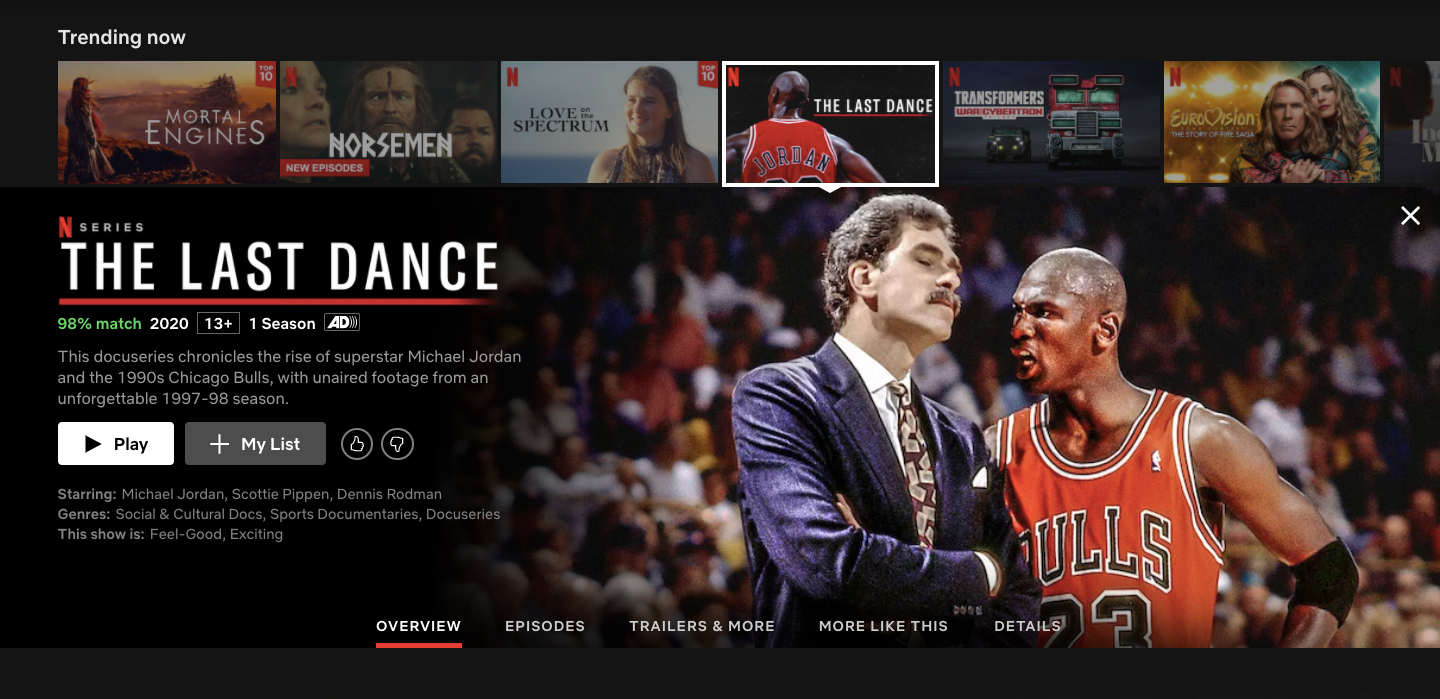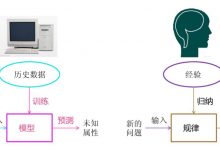ai 文案
We’ve already seen several industries shaken by the introduction of automated systems e.g., transportation with autonomous vehicles, and manufacturing with robotic assembly lines. In a lot of those cases, machines replaced manual labour. But as technology improves, as AI gets smarter, we start seeing the potential for computers to replace creative tasks as well.
我们已经看到,自动化系统的引入动摇了多个行业,例如自动驾驶汽车的运输和机器人装配线的制造。 在许多情况下,机器代替了人工。 但是随着技术的进步,随着AI的变得越来越智能,我们开始看到计算机也有可能取代创造性的任务。
AI is evolving at a scary speed. Eight years ago we saw the introduction of Siri. Six years ago we saw Amazon Alexa enter the market. And four years ago we saw Google bring out its Assistant. But they all pale in comparison to the creative abilities of GPT-3, a new language model developed by OpenAI.
人工智能正在以惊人的速度发展。 八年前,我们看到了Siri的推出。 六年前,我们看到了亚马逊Alexa进入市场。 四年前,我们看到Google推出了其助手。 但是与OpenAI开发的新语言模型 GPT-3的创造力相比,它们都显得苍白 。
So what does the release of GPT-3 mean for us as designers and UX writers?
那么GPT-3的发布对我们作为设计师和UX作家意味着什么呢?
Our apps need to communicate with users. We do that by displaying text within our products; from input labels to complex error messages. Great experiences utilise well written UX copy to help people understand the state of the system.
我们的应用程序需要与用户交流。 我们通过在产品中显示文本来做到这一点; 从输入标签到复杂的错误消息。 出色的经验会利用编写良好的UX副本来帮助人们了解系统状态。
With AI improving does that mean we no longer need to write copy for our products? Can we automate that task as well? Before we answer that question let’s dive into some examples of what GPT-3 can do.
随着AI的改进,这是否意味着我们不再需要为产品写拷贝? 我们也可以自动化该任务吗? 在回答这个问题之前,让我们深入研究GPT-3可以做什么的一些示例。
什么是GPT-3? (What is GPT-3?)
Recently, OpenAI granted private access to APIs for GPT-3. Developers shared examples of what the model can do on Twitter and the online world buzzed with excitement and fear.
最近,OpenAI授予了对GPT-3 API的私有访问权限。 开发人员在Twitter和在线世界上分享了该模型可以做什么的示例,这些模型充满了兴奋和恐惧。
GPT-3 can generate text that reads quite well; as if a human had written it. But does that mean much for us as designers and writers? I’ll go over three cases where the use of an AI system could completely take over the human copywriter.
GPT-3可以生成阅读效果很好的文本; 好像是人类写的一样。 但这对我们作为设计师和作家来说意义重大吗? 我将讨论三种情况,其中使用AI系统可以完全取代人工撰稿人。
1.自适应语气 (1. Adaptive tone of voice)
Netflix uses personalisation to adapt their app to suit your watching behaviour. They’ll shuffle the belts on the home page to suggest shows you’re likely to watch. But with an AI language model, you could also adapt the way you speak to users.
Netflix使用个性化功能来调整其应用程序以适合您的观看行为。 他们会随机播放首页上的皮带,以提示您可能会观看的节目。 但是,借助AI语言模型,您还可以调整与用户说话的方式。
Different messages will resonate with different people. If we use Netflix as a case study. They could adapt the copy “because you watched” to a more colloquial “bro, try these shows” for certain users. Or a more formal “you may find these shows interesting” for others. This is a fairly simplistic example. If there were 5 to 10 tone variations then it would be easy to manage for a human. But as the number of variations grow, and if we apply the adaption to more areas within the product, it would become unwieldy to manage. But an AI would find it a piece of cake. All we need to do is tell the AI where to place the copy and the key point of the message; it would then generate the tailored text for each user.
不同的消息会引起不同的人共鸣。 如果我们使用Netflix作为案例研究。 他们可以为某些用户改编“因为您看过”的副本,使其成为口语化的“兄弟,请尝试这些节目”。 或者更正式的“您可能会发现这些节目有趣”。 这是一个相当简单的例子。 如果有5到10种音调变化,那么对于人类来说将很容易管理。 但是随着变体数量的增加,如果我们将改编应用于产品中的更多区域,将很难管理。 但是,人工智能会发现它是小菜一碟。 我们需要做的就是告诉AI在哪里放置副本以及消息的关键点。 然后它将为每个用户生成定制的文本。

GPT-3 can simulate any writing style as long as it has enough source material to learn from. Here’s an example showing how it could match the tone and style of Jerome K. Jerome a writer from the late 19th century.
只要GPT-3有足够的学习材料,就可以模拟任何写作风格。 以下示例显示了它如何与19世纪末的作家Jerome K. Jerome的语调和风格匹配。
And this example shows how you can use GPT-3 to match your email style. Supply a few key points and the AI will generate a full email for you.
此示例说明了如何使用GPT-3匹配电子邮件样式。 提供一些关键点,人工智能将为您生成完整的电子邮件。
Adapting the tone of voice is powerful but you could also adapt the information itself. New users would benefit from more in-depth descriptions. While power users could have succinct messages that melt away. The copy would dynamically adapt its brevity based on how much experience the user has with the app.
调整语音语调功能强大,但您也可以调整信息本身。 新用户将从更深入的描述中受益。 尽管高级用户可能会收到简洁的消息,但这些消息会消失。 该副本将根据用户对应用程序的使用经验来动态调整其简洁程度。
We could also use it to reach people that speak a different language. Many websites and apps already support translations. But with AI you could automate this giant step.
我们还可以使用它来吸引说不同语言的人。 许多网站和应用程序已经支持翻译。 但是,借助AI,您可以自动化这一巨大的步骤。
2.智能错误消息 (2. Intelligent error messages)
In my article on future trends, I talk about how connected systems will create complex design challenges. There’ll suddenly be an abundance of edge-cases and scenarios to cater for.
在关于未来趋势的文章中,我谈到了互联系统将如何带来复杂的设计挑战。 突然会有大量的边缘案例和场景可以满足。
Within this new complex world, where everything talks to each other, from your toaster to your glasses, we’ll need to help users navigate the state of each product. And a key component of that will be to help diagnose why something isn’t working. With the abundance of edge-cases comes a proliferation of error messages.
在这个新的复杂世界中,从烤面包机到眼镜,一切都在相互交流,我们需要帮助用户导航每种产品的状态。 其中的一个关键组成部分将是帮助诊断某些东西为什么不起作用。 随着大量的边缘案例的出现,错误消息的泛滥。
Trying to think of each edge case is difficult and time-consuming. And for each case, we’ll need to think of the appropriate copy and calls to action to help the user get back on track.
试图考虑每个极端情况是困难且耗时的。 对于每种情况,我们都需要考虑适当的副本和号召性用语,以帮助用户重回正轨。
This is where AI could come in. GPT-3 could learn about our product and the different connected devices. It could write an appropriate message for a situation as it encounters it. UX writers would no longer need to come up with a message for every possible permutation of the system.
这就是AI可以进入的地方。GPT-3可以了解我们的产品和不同的连接设备。 它可以在遇到某种情况时为其写一条适当的消息。 UX编写者将不再需要为系统的每个可能排列提供一条消息。
It would also be able to handle future states. A new device or technology might get released long after your product is in the market. If we train the AI with information about the new device then it would be able to generate appropriate messages. It would cater for any errors that occur between your product and the new integration.
它还将能够处理将来的状态。 您的产品投放市场后,很可能会发布新的设备或技术。 如果我们用有关新设备的信息训练AI,那么它将能够生成适当的消息。 它可以解决您的产品与新集成之间发生的任何错误。
And system errors are difficult to communicate. Often we need to make technical concepts easy to understand. GPT-3 can simplify complex copy. And if the user doesn’t understand that particular version of the message, they can always ask the AI to try again in real-time; to re-write the message until it becomes clear for that specific user.
而且系统错误很难传达。 通常,我们需要使技术概念易于理解。 GPT-3可以简化复杂的复制。 而且,如果用户不理解该消息的特定版本,则可以随时要求AI实时重试; 重新编写消息,直到该特定用户清楚为止。
Here’s an example of GPT-3 converting complex legal text to something easy to understand.
这是GPT-3将复杂的法律文字转换为易于理解的示例。
This intelligent reasoning and continual learning can make your product more intuitive. It’ll handle cases that we hadn’t thought about. And can tailor the message for every particular circumstance.
这种智能的推理和不断的学习可以使您的产品更加直观。 它将处理我们没有想到的案例。 并且可以针对每种特定情况量身定制消息。
3.产品信息和文章 (3. Product information and articles)
Apps often have items in a catalogue that need descriptions. Whether it’s an online clothes shop or a banking website, they’ll have a list of products or services that need a summary. With GPT-3 you could automate the writing so any new product automatically gets a description. Or maybe you need a series of articles explaining how something works. Again you could get the AI to spit out a ton of content rapidly.
应用程序通常在目录中包含需要描述的项目。 无论是在线服装店还是银行网站,他们都会有需要摘要的产品或服务列表。 使用GPT-3,您可以自动执行写作,因此任何新产品都会自动获得描述。 或者,您可能需要一系列文章来解释某些事物的工作原理。 再一次,您可以使AI快速吐出大量内容。
Continuing with the Netflix example. We could get GPT-3 to write a description for each show. We wouldn’t need a team working behind the scenes writing show summaries. The summary would also vary in length to fit the page or device you’re viewing it on.
继续以Netflix为例。 我们可以让GPT-3为每个节目写一个说明。 我们不需要团队在后台编写表演摘要。 摘要的长度也会有所不同,以适合您正在查看的页面或设备。

You could extend this to include information about actors, directors, or studios. You could have a conversation with the AI to help you figure out what to watch. A professional show critic with a trove of information at its fingertips.
您可以扩展它以包括有关演员,导演或工作室的信息。 您可以与AI进行对话,以帮助您确定要观看的内容。 一个专业的节目评论家,唾手可得的大量信息。
反对人工智能的争论 (Arguments against an AI)
We’ve discussed three examples where automated writing could be powerful. But let’s also discuss a few pitfalls of GPT-3.
我们已经讨论了三个示例,其中自动编写功能可能很强大。 但是,我们还要讨论GPT-3的一些陷阱。
-
GPT-3 has been trained with 175 billion parameters. But it only knows what it’s been trained to know. Again going with the Netflix example, it won’t know about obscure shows or movies that no one’s written about. Maybe one day it could “watch” the movie and come up with its own understanding. But currently, you would have to train it — which means you would have to write a synopsis anyway.
GPT-3已接受了1,750亿个参数的培训。 但是它只知道经过训练就知道什么 。 再次以Netflix为例,它不会知道没人写的晦涩的节目或电影。 也许有一天,它可以“观看”电影并得出自己的理解。 但是目前,您必须对其进行培训-这意味着无论如何您都必须编写摘要。
-
It has racial and gender biases. It’s examples like the following tweet from Jerome Pesenti, VP of AI at Facebook, that show the lack of empathy an AI would have.
它有种族和性别偏见 。 例如,以下来自Facebook AI副总裁Jerome Pesenti的推文就说明了AI缺乏同情心。
-
Companies will want total control of their voice. There’s a risk in giving up control of your communication to an AI. You can no longer sanity check every piece of text that users will associate with your brand. It may save time, money, and effort. But may harm your brand overall. Especially if the AI produces offensive messages or gives misinformation.
公司将希望完全控制自己的声音 。 放弃对与AI的通信的控制存在风险。 您不再能够理智地检查用户将与您的品牌相关联的每段文字。 它可以节省时间,金钱和精力。 但可能会整体上损害您的品牌。 尤其是当AI发出令人反感的消息或提供错误信息时。
There’s a lot of potential with AI. But GPT-3 is only a stepping stone. Even Sam Altman, CEO of OpenAI, admits it’s just a very early glimpse of how AI is going to change the world.
人工智能有很多潜力。 但是GPT-3只是垫脚石。 甚至OpenAI首席执行官Sam Altman都承认,这只是对AI如何改变世界的早期了解。
Even if this particular version of the AI isn’t going to take over UX copywriting. there’s a case for future models to do so. The pitfalls can be overcome, and if the benefits prove profitable, then it’s only a matter of time until we see AI become an integral part of our copy design.
即使该特定版本的AI不会取代UX文案。 将来的模型会这样做。 陷阱可以克服,并且如果收益证明是可盈利的,那么我们看到AI成为我们拷贝设计不可或缺的一部分只是时间问题。
Should we be worried though? No. Well not completely.
我们应该担心吗? 不,不完全是。
There’s another pitfall that I don’t think AI will be able to overcome. We feed an AI with data points to teach it about the world. And even though, as humans, we’re also “trained” by what we’ve learned and experienced, we can still think beyond our capacity to come up with novel ideas. Our creativity is our greatest strength. So yes, AI will take over certain tasks. But there’s still a place for creative, empathetic, and elegant UX writing.
我认为AI无法克服另一个陷阱。 我们向AI提供数据点,以教授有关世界的知识。 而且,即使作为人类,我们也受到了所学和经验的“训练”,我们仍然可以超出自己的能力去想出新颖的想法。 我们的创造力是我们最大的力量。 是的,人工智能将接管某些任务。 但是仍然有创造力,同理心和优雅的UX写作的地方。
Humans will become the conductors of communication and AI the orchestra.
人类将成为交流的指挥,而人工智能将成为乐团。
UX Para Minas Pretas (UX For Black Women), a Brazilian organization focused on promoting equity of Black women in the tech industry through initiatives of action, empowerment, and knowledge sharing. Silence against systemic racism is not an option. Build the design community you believe in.UX Para Minas Pretas (UX For Black Women),这是一个巴西组织,致力于通过采取行动,赋权和知识共享的举措来促进科技行业中的黑人女性平等。 对系统性种族主义保持沉默是不可行的。 建立您相信的设计社区。
翻译自: https://uxdesign.cc/is-ai-the-future-of-ux-copywriting-a57d438642f5
ai 文案
 爱站程序员基地
爱站程序员基地
![[翻译] Backpressure explained — the resisted flow of data through software-爱站程序员基地](https://aiznh.com/wp-content/uploads/2021/05/6-220x150.jpeg)

